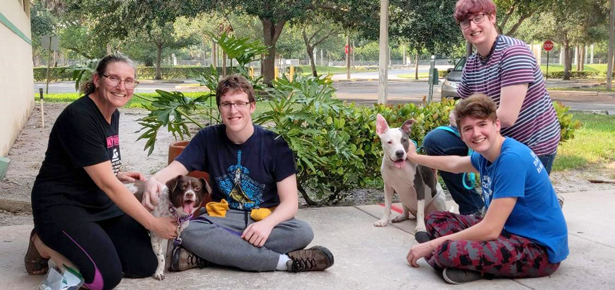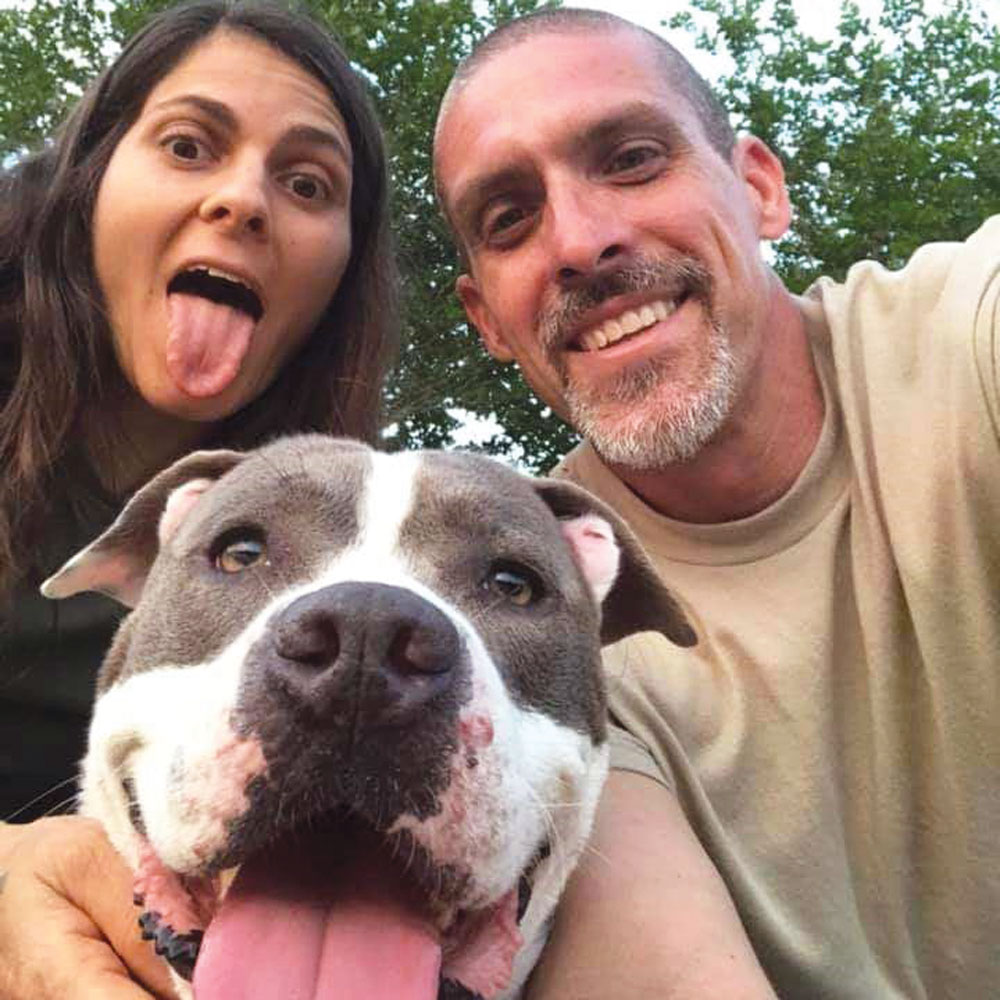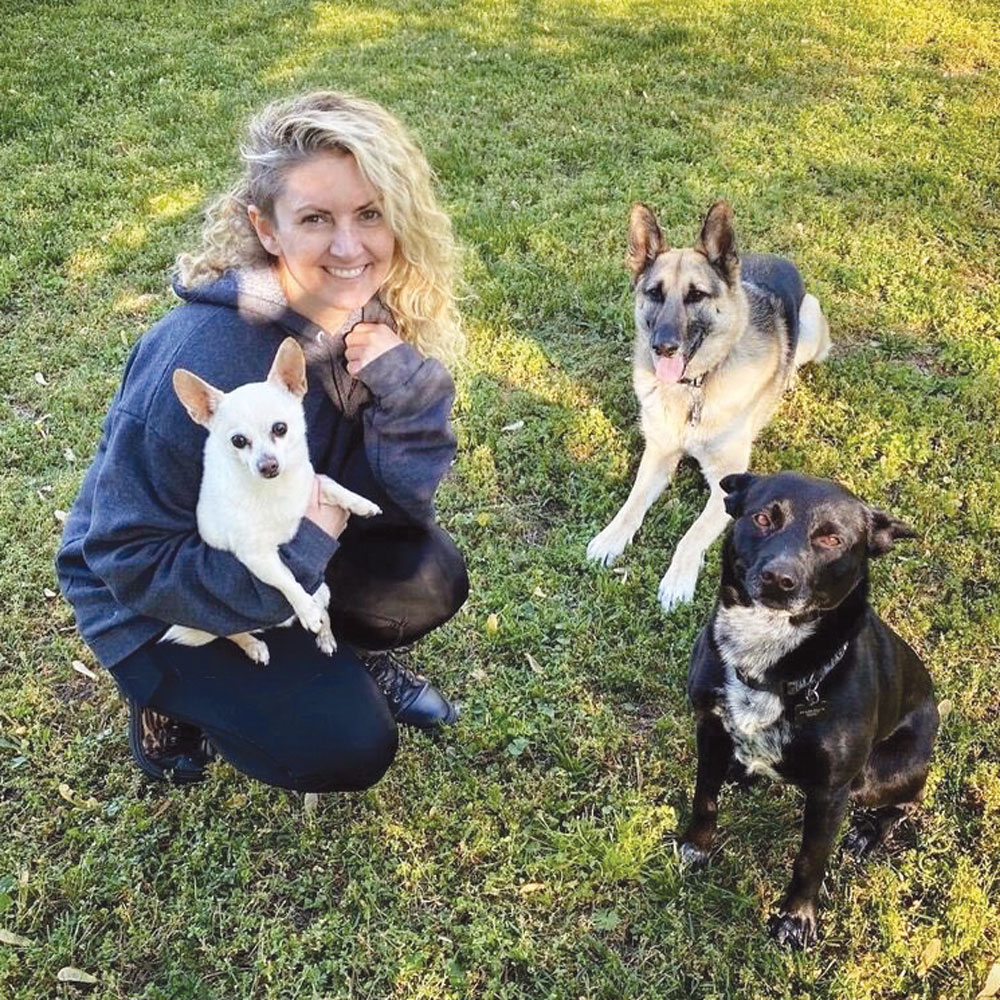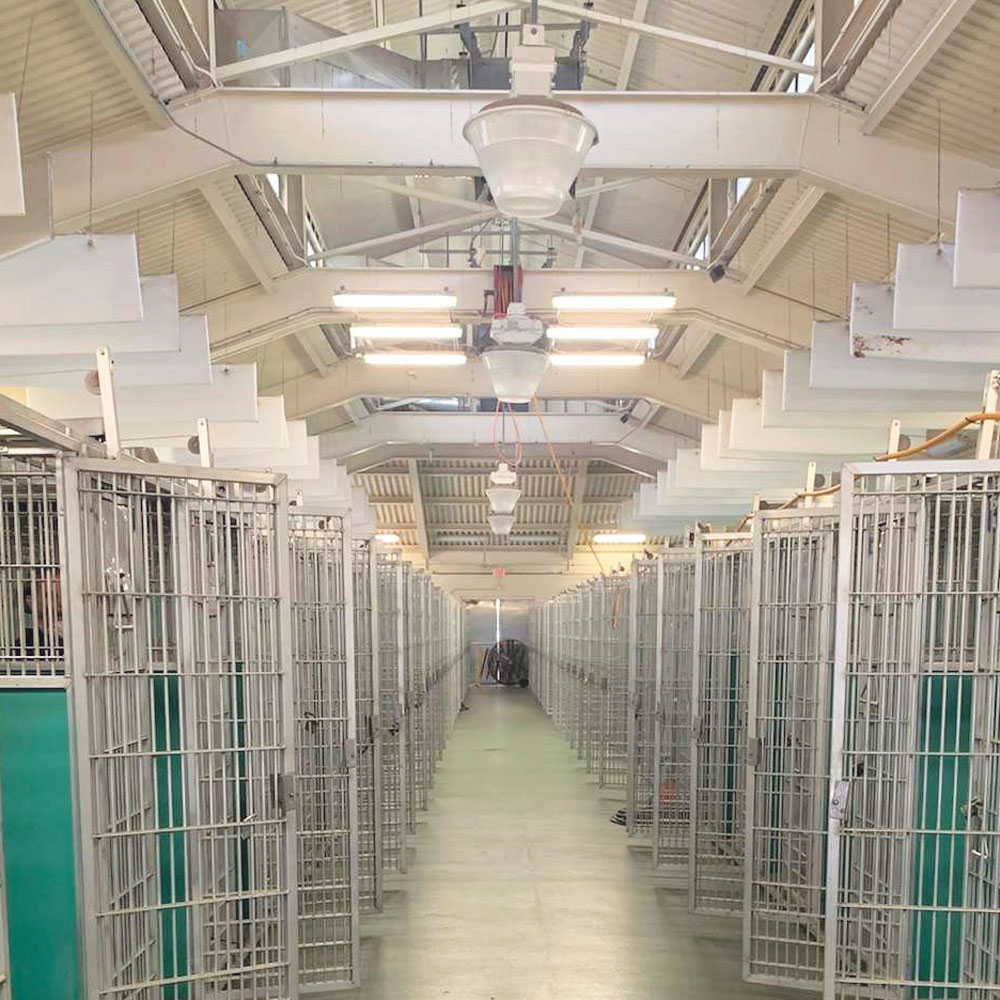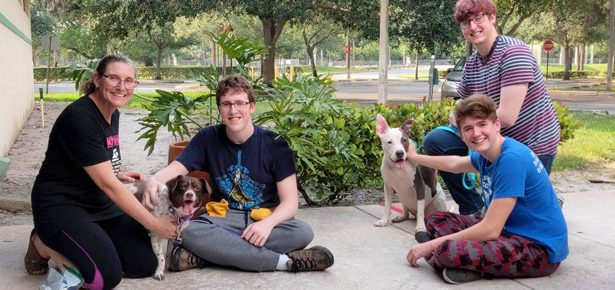
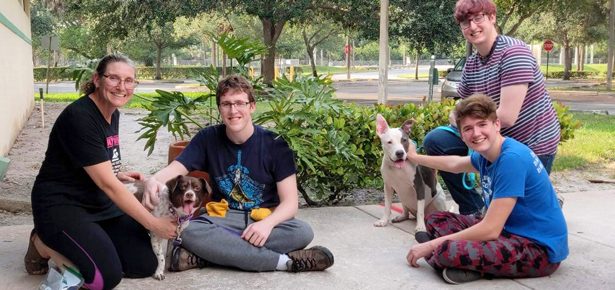
Dog Shelters Clear Kennels For First Time Ever
One of the bright spots amid the coronavirus pandemic has been an incredible increase in dog fostering and adoptions.
More stray dogs are getting a second chance at a forever home as animal shelters across the U.S. and Canada see more people applying to adopt and foster pets amid COVID-19 restrictions.
In Florida, the Palm Beach County Animal Care & Control has just recently seen one of its three kennels empty—for the first time ever.
The shelter’s community outreach manager, Elizabeth Harfmann, says the number of dog adoptions and fosters started to increase in the middle of March.
“We’ve kind of slowed down as a society and people are home more often,” Elizabeth says, and that people are looking for companionship—“something positive, despite all the uncertainty and stress that’s going on in the world, so adopting or fostering a pet is an excellent way to do that.”
Elizabeth says each kennel can hold between 48 to 100 dogs at a time. “We’re open seven days a week. We always have animals coming through our doors that need our help—so for us to have a completely empty kennel was something that was just amazing,” she says.
“The lack of animals… it’s very surreal,” Elizabeth says about the shelter now, which is “great” for staff because it’s giving the team more time to pamper the animals in their care.
Elizabeth says the average stay for an adoptable dog at the shelter is around two weeks, but now it’s only a “matter of days.”
“We’re still getting inquiries daily… anywhere from five to 15 from people interested in adopting or wanting to pick up the foster,” Elizabeth says.
A National Geographic and Morning Consult poll of 2,200 people in the U.S. found that 20% have considered adopting a pet during this time of social distancing and quarantining. And 17% have considered fostering.
“I have found a lot of our fosters for dogs and cats recently are all planning on adopting them so those pets aren’t coming back,” Elizabeth added.
Nashville Metro Animal Care and Control Director Lauren Bluestone says around the beginning of March, the shelter felt an urgency to find the animals foster homes, one reason being social distancing. Many shelters feared adoptions would halt with quarantine measures in place. This coupled with a potential staffing crisis if work-from-home orders affected their operations along with a possible influx of surrendered dogs, could have proved disastrous. Instead, the opposite took place.
“It happened to be a very successful push in terms of the numbers of people who came out and stepped up and wanted to help the animals,” Lauren says. As the dogs come in, “we’re literally getting them out in foster right away.”
Lauren says in March 2019, 12 people signed up to become foster dog parents—that same time this year 447 new applicants signed up.
“I couldn’t be happier,” Lauren says, “this has just been overwhelming.”
“It’s a great time for people to step up and help out. A lot of people are working from home. I think pets, or even fosters, are a great addition for that little emotional perk on a daily basis and I think that’s what a lot of people are saying,” she says.
At Foster Dogs Inc. in New York, founder Sarah Brasky says her organization is also seeing a spike in adoption numbers.
“We’ve had far more interest in fostering than we’ve ever had in the past,” she says, adding that Foster Dogs received an average of four and a half applicants a day last year—that number jumping to an average of 100 per day in March 2020.
Sarah says since March 14, nearly 90 percent of applicants on the website’s Foster Roster are brand new to fostering.
“What’s ironic,” she says, “is that far more people want to foster than there are dogs currently in shelters—so it’s this strange situation where the tables have turned.”
“The beauty of fostering is that with every new foster dog you take in, you learn something new and you’re able to take on more the next time around,” she says, adding she hopes this foster momentum continues after COVID-19 restrictions are lifted.
Fosters can also play a big role in finding stray dogs a new forever home, Sarah says, for example “when a foster parent takes a photo of a dog on a couch, or playing in the yard, or playing with their cats or child, that photo can make all the difference when adopters are looking at pet listings, and could literally be the reason why that dog gets adopted.”
Susie’s Senior Dogs uses its social media platform to give exposure to older stray animals from all over the country, and its founder, Erin Stanton, says that she has noticed in the past few weeks those animals are finding homes “a lot quicker.”
“The nature of posting about senior dogs, is it can take some time to get them adopted,” Erin says, “in the idea of convincing people that even if you’re going to have possibly less time with a senior dog than you would with a puppy, that it still is worth it—that it’s still something worthwhile and that it’s still something that you can find so much joy and companionship, and there’s so much that you can do with a senior dog.”
Erin says now rescue organizations have been letting her know that the senior dogs being shared on her social media platform are getting adopted within a week.
The BC SPCA in Canada, and shelters across the country, have also been seeing more dogs find forever homes quicker than usual since the COVID-19 restrictions began in March, according to spokesperson Lorie Chortyk.
“In March 2019, 12 people signed up to become foster dog parents—that same time this year 447 new applicants signed up.”
“We’re seeing a huge interest, not only in dog adoptions but adoptions for every kind of animal,” Lorie says. “We have multiple applications for animals that come in.”
“Certainly, puppies would always be adopted very quickly, but sometimes other dogs might stay with us for a week, 10 days, two weeks—now those same animals are going out the same afternoon that they come in,” Lorie says, adding that interest includes animals of all ages in the shelter’s care.
“We really appreciate that people are looking to the SPCA for animals. There are so many amazing animals who need homes, and new animals are coming in every day,” she says.
Lorie echoes other shelters when she says that while she’s happy to see more animals get adopted and fostered by people spending more time at home amid social distancing, staff are making sure to thoroughly screen potential pet owners to make sure they are fully aware of what they are signing up for so no animals are returned after society heads back to work.
“We don’t want people making just impulse decisions because they might be bored or lonely at home. I mean we want to make sure that people understand that the commitment that they’re making is for the lifetime of that pet,” Lorie says. “We make sure that all the same adoption counselling and discussions take place so people really do understand the financial commitment that they’re making and the time commitment that they are making.”
Lauren says with social distancing, video interviews are common at the Nashville shelter with foster applicants, and Elizabeth says staff are having conversations with applicants to make sure their potential new dog fits with their lifestyle.
“People are worried that when the pandemic ends, animal shelters are going to be flooded with pets again, but I personally don’t think that’s the case,” Elizabeth says. “People have had the time, they’re home, so they’ve had the time to really allow those pets to integrate into their family and become part of their routine and their daily schedule.”
Erin notes it’s important for this new wave of fostering and adopting to continue after the COVID-19 restrictions are lifted because “there’s obviously going to be economic hardship,” she says, which will result in “an increase in shelter intakes because people can’t afford their dogs anymore.”
For now, though, “seeing empty kennels like this is a dream for us,” Elizabeth says. “This is what we work so hard for day in, and day out. We’re over the moon.”
Join the newsletter and never miss out on dog content again!
"*" indicates required fields
By clicking the arrow, you agree to our web Terms of Use and Privacy & Cookie Policy. Easy unsubscribe links are provided in every email.
